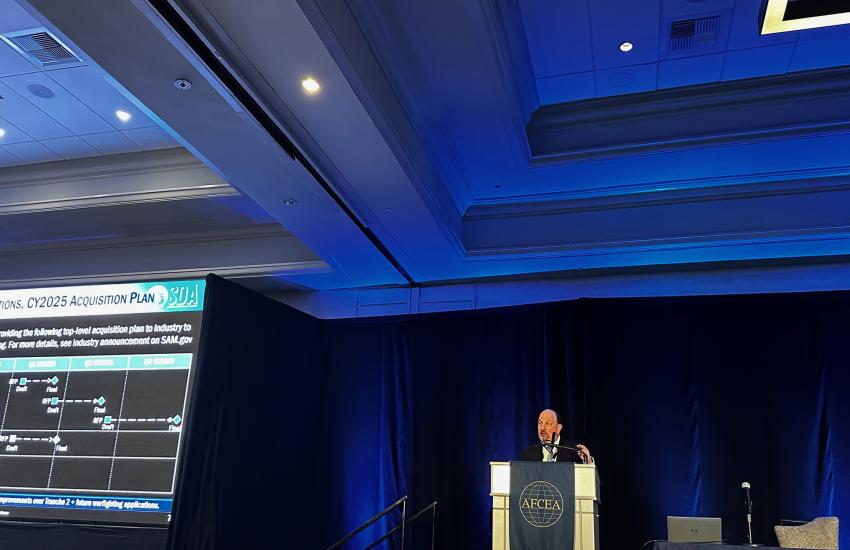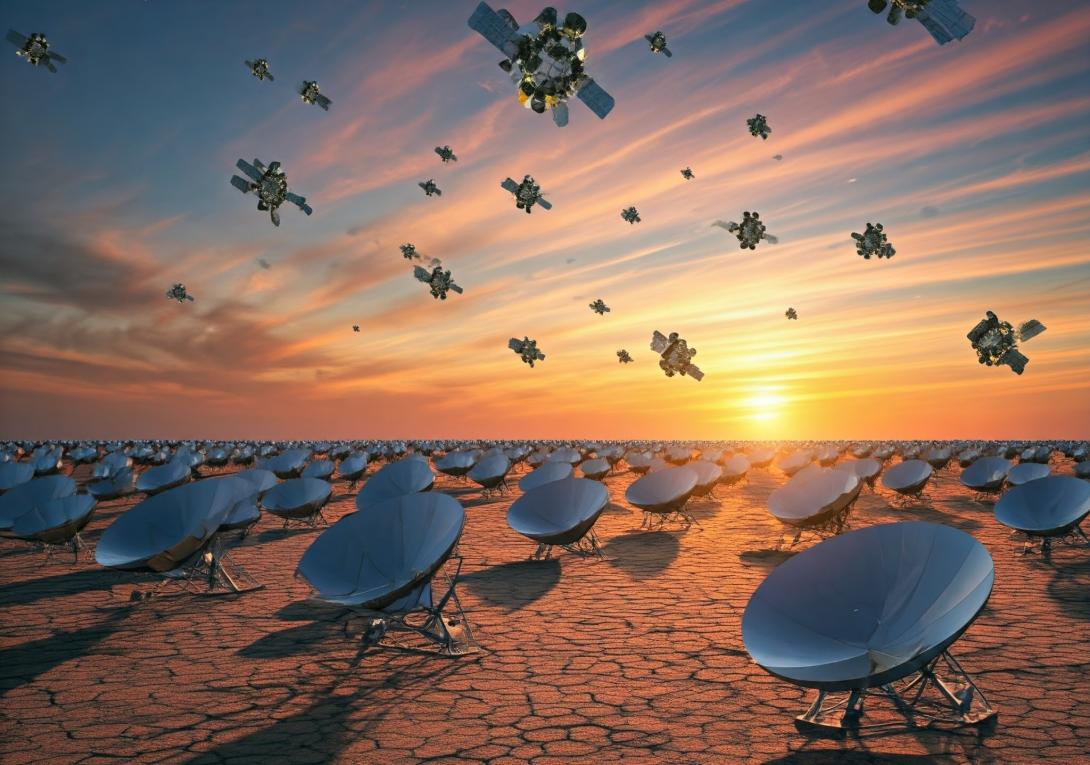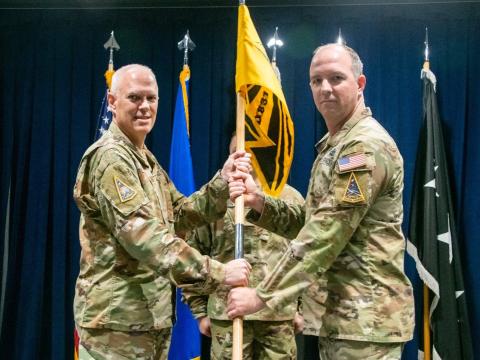Space Development Agency Selects Companies in Initial HALO Effort
The U.S. Space Force’s Space Development Agency (SDA) announced Wednesday the winners of the Hybrid Acquisition for Proliferated LEO effort, known as HALO. Nineteen U.S. companies were chosen as primes to compete for future orders, Derek Tournear, director of the SDA, said in a statement.
“Through HALO, the SDA has an even faster and more flexible contracting mechanism in place,” Tournear said. “We believe HALO will also increase the pool of performers capable of bidding on future SDA programs, including participation in layers of future tranches.”
The companies selected to be in the initial pool include:
- Airbus U.S. Space & Defense Inc., Arlington, Virginia
- Apex Technology Inc., Culver City, California
- AST SpaceMobile USA LLC, Midland, Texas
- Astro Digital, U.S. Inc., San Jose, California
- Capella Space, San Francisco
- CesiumAstro, Austin, Texas
- Firefly Aerospace, Cedar Park, Texas
- Geneva Technologies Inc., Monument, Colorado
- Impulse Space, Redondo Beach, California
- Kepler Communications U.S. Inc., Wilmington, Delaware
- Kuiper Government Solutions LLC, Arlington, Virginia
- LeoStella LLC, Tukwila, Washington
- Momentus Space, San Jose, California
- Muon Space Inc., Mountain View, California
- NovaWurks Inc., Los Alamitos, California
- Space Exploration Technologies Corp. (SpaceX), Hawthorne, California
- Turion Space Corp., Irvine, California
- Tyvak Nano-Satellite Systems Inc., Irvine, California
- York Space Systems LLC, Denver
The initial HALO effort centers on capabilities for the Tranche 2 Demonstration and Experimentation System, or T2DES. HALO can also be used for future tranches of the Proliferated Warfighter Space Architecture and other SDA demonstration projects.
The contracting structure is an other transaction authority (OTA) based on an indefinite-delivery-indefinite-quantity (IDIQ) approach, explained Frank Turner, the SDA’s technical director, speaking at the Space Force Industry Days, hosted by the AFCEA Los Angeles Chapter in conjunction with NDIA, the Air and Space Force Association, the Southern California Aerospace Professional Representative (SCAPR) and the Space Force’s Space Systems Command.
The effort concentrates on bringing in innovation and prototypes of spacecraft and systems under a “flexible and fast contracting mechanism.” Essentially, it allows the agency to quickly try out different technologies depending on a mission need and “try before you buy,” Turner said.
And while the series of tranches the SDA is pursuing to construct the proliferated warfighter space architecture pulls in specific technologies as well, HALO capabilities are more “upstream” or less proven, less established solutions, Turner said.
HALO, therefore, aims to reduce risk and demonstrate feasibility that the technology could go into a proliferation environment—such as for future tactical data link and optical communication missions.
“The idea behind the tranches is that we are proliferating for the warfighter,” Turner said. “HALO is well upstream of that. This idea of, 'We're not 100% sure about this technology yet, but let's go figure it out. Let's go fly it. Let's fly it quickly.' It could be a new sensor, a new antenna or some other new capability."

Working quickly, the agency released in May the HALO OTA multistep competition. The winners announced Wednesday can submit proposals to compete for specific flight demonstration opportunities when the SDA releases the first T2DES prototype orders.
The agency indicated the future prototype orders “will focus on rapid end-to-end mission demonstrations with launch of two identical satellites 12-18 months” after the orders are awarded.
Turner clarified that just because a company is not on the initial 19-member list, that does not preclude it from participating in HALO. A company could always coordinate with one of the prime corporations in the pool and be a subcontractor.
“Whenever we put out a prototype order, which will be for a mission, then we want teams to start forming based on best technology, best capability within the structure of HALO,” Turner suggested. “A lot of you may be sitting there thinking, ‘Well, I can't play in HALO.’ That's not true. You can absolutely play in HALO. It just depends on what the mission and what the prototype order is. That is what I want you to keep in mind, when those type of orders hit the street, then there is a pool of the potential primes, but that is it, and what goes below that is negotiable amongst those primes.”
In addition, the SDA said it will also provide opportunities for the companies to gain experience working with the agency on demonstration projects. The pool members will be able to ensure the security aspects of their capabilities are enough to perform on SDA missions, the agency indicated.
The agency had said previously it intends to review the pool of eligible companies “periodically.”
The SDA’s award grants each one of the 19 members an initial $20,000 agreement, meant to help with administrative and travel expenses.
“Next year is going to be a big T2DES year,” Turner noted.





Comments